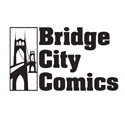Empowerment Through Art: NOLA Rising
I had no idea an impromptu meet-up on our last afternoon in New Orleans would leave me with one of the greatest feelings of hope and optimism I had experienced on this trip.
Three of us met Rex Dingler – a Louisiana native, artist and shipping boat captain in his late 30s – at a little dive bar in the Upper 9th Ward, around the corner from his art studio.
Like most New Orleans residents, his life is divided into pre-Katrina and post-Katrina.
But rather than others — who haven’t quite overcome their sense of frustration and cynicism over the past five years — Dingler is using his talents and expertise to make change on a major level.
As president of the grassroots arts-based group NOLA Rising, he wants to create a massive mural on the grey concrete slab wall of the levee that broke after Katrina, flooding the Lower 9th and other neighborhoods.
As of last week, the group obtained its official nonprofit status so it can now solicit for donations. NOLA Rising is in the process of recruiting hundreds of local artists to create the mural, which will stretch 12 feet high and three-quarters of a mile long. Community members and children from MLK School — the only 9th Ward school that’s been reopened – will also be commissioned to help.
The project, slated to begin by the end of the year, will be one of the nation’s largest murals. Since it’s a federal wall, the group has sought and received permission to proceed with planning from the levee boards and U.S. Corps of Engineers, and is awaiting final approval. The group also sought the assistance of community leaders and went door to door to ask the feelings and opinions of residents facing the wall; nearly everyone was supportive, Dingler says.
Besides beautifying the Lower 9th and restoring the human spirit after so much ugliness, the mural is a symbolic way to give residents a small stake in their community once again – one they can see on a daily basis.
“To me, it’s one of the most important walls in modern American history, like the Berlin Wall,” Dingler says, “except we want this one to stay up.”
Birth of a movement
The mural project stems from three years of street art Dingler helped to spur after Katrina. Immediately after the hurricane, Dingler quit his job to travel, but returned a year later in the summer of 2006, shocked by the still-primitive surroundings.
“It was very gray, brown, dead … Houses in the middle of the streets, cars in trees. I felt there needed to be color.” People were so depressed by the devastation, he had friends who had committed suicide by overdosing on drugs. “It was all a bunch of drugged up zombies running around,” he says.
It wasn’t the place he knew as home. “New Orleans has a real vibrant spirit, an intense soul you don’t really see in many places.” The only thing he could think to do was to start reinvigorating the city with color and messages of hope.
So Dingler sounded a call to action to his artist friends, who spread the word throughout the community. He supplied the paints and brushes and people of all walks of life came together to paint on any surface they could find: street signs, fences, walls, buildings.
As much as the guerilla art livened up the city’s soul, it was a way for the artists to vent their frustration and anger as well. “Through street art, everybody has a voice,” Dingler says. “It’s the most important thing in the world to encourage people to use it because it’s the way to get things moving and get things changed.”
Before long, the government came in and tried to stop their efforts. Dingler says he was tracked down by police at a public art function and charged $50,000 for violating the city’s ordinance against posting messages on public property. “The logic was I was promoting and encouraging graffiti,” he says. “I felt like I was doing something that had a purpose.”
Dingler was able to get the fine knocked down to $200, plus six months of probation. The experience hardly stopped him. “I just stopped signing my pieces,” he says.
Three years later, he says, people felt like they were finally moving on. “Then the oil spill comes along – another engineering failure designed by greed. I’m angry about it and fed up. Business as usual shouldn’t include a human cost.”
In the five months since the spill the artists have since shifted gears and created a number of art pieces on giant yellow oil cans, each with a different word such as “envy,” “greed” and “gluttony.” There are seven cans in all, each placed in a different neighborhood in New Orleans. Messages are also painted and stuck on signs with stickers; one is a blue dolphin enveloping the word “oil.”
As a shipping boat captain, the oil spill hits him hard personally, Dingler says. But unless people are directly involved in the oil or seafood or tourism business, he says he’s been surprised to see many turn a blind eye. “It doesn’t seem people are giving the same attention to the environment as they are to the economy,” after Katrina, he says. “It’s one of those systematic problems of doing business in Louisiana. Industry always seems to come first.”
We end our talk by asking The Ultimate Question, the real reason we’re here: What can we do to help?
Dingler thinks long and hard, and his answer surprises us. It has nothing to do with art, or helping to restore New Orleans’ urban fabric. As concerned and involved citizens, he says, we should do our best to influence policies from where we live, because “it can’t just all come from down here.”
In particular, he says one of the top priorities should be healthy coastal restoration. “You can clean all the pelicans you want, but if they don’t have a place to land, it doesn’t matter,” he says.
So now we’re home, and NOLA will still be rising for a long time. What impressed me most about Dingler’s creative initiatives was that he’s not just dreaming of action but making it happen – and bringing the community with him.
Because without leaders like this, folks would just be that much more lost. “Because of the heat, the (government) corruption,” he says, “New Orleans is accustomed to sitting on the edge, dangling our feet, wondering what’s next.”
By Jen Anderson


























1 COMMENT
Thanks Y’all! We love Rex.
Got to you late, so we posted late but will try to carry this fine post on tomorrow’s Ladder.
Keep this up and we might just adopt yo’asses.
Leave a comment